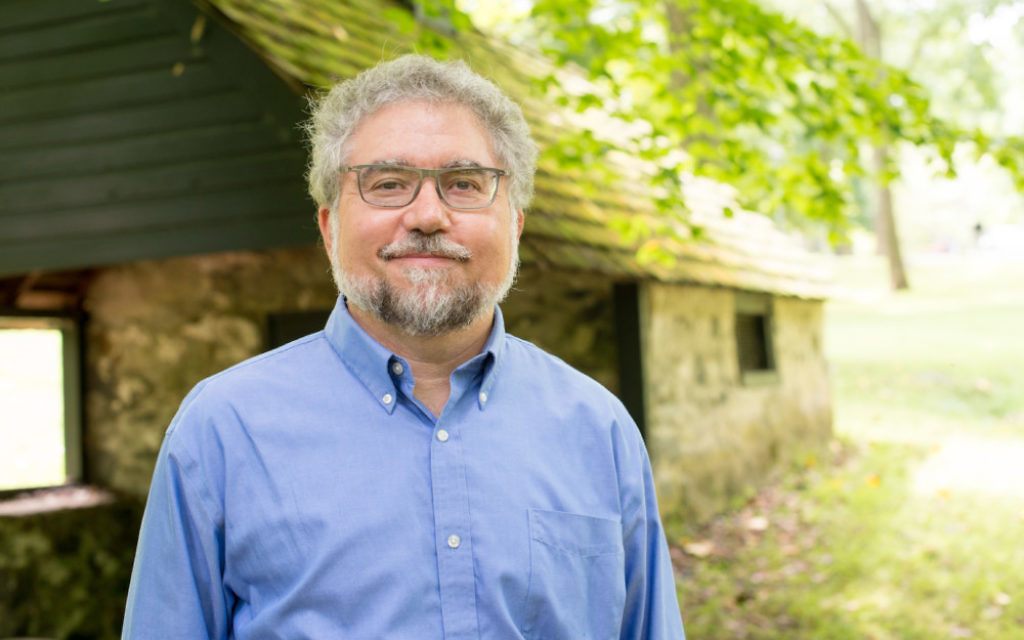‘Kosher USA’: A Soda Fountain of Knowledge
Roger Horowitz has won a National Jewish Book Award for “Kosher USA.”
One of the great stories from the lore of Jewish Atlanta tells how Congregation Shearith Israel Rabbi Tobias Geffen, responding to concerns from Jews across America about the appropriateness of drinking Coca-Cola at Passover and year-round, gained access to the top-secret recipe and provided his hechsher.
Thereafter, observant Jews could trust Coke was kosher, and during Pesach we get the special yellow-capped, kosher-for-Passover version.
Get The AJT Newsletter by email and never miss our top stories Free Sign Up
But, as Roger Horowitz shows in “Kosher USA: How Coke Became Kosher and Other Tales of Modern Food,” the truth behind the legend is far more complicated. Rabbi Geffen didn’t just look at a recipe and offer his certification. He studied the manufacturing process, learned the chemistry, and delved into the laws and history of kashrut.
The biggest issue with Coke was the use of minute amounts of glycerin in the soft drink’s production. Rabbi Geffen first determined that Coke’s glycerin supply was treif because it was derived from animals at plants that did not separate kosher and nonkosher sources. Based on rulings from the 12th and 16th centuries, He then decided that the concept of bitul b’shishim (one-sixtieth nullification), which allows food to remain kosher when it is contaminated by something nonkosher that makes up less than one-sixtieth of a mixture and doesn’t materially change it, did not apply to Coke because the glycerin was not an accidental addition.
Coke changed to a vegetable source for the glycerin and earned the rabbi’s approval, but Horowitz argues that what Rabbi Geffen did went far beyond bringing a taste of Atlanta to Jews worldwide. That methodical, scientific application of Jewish law, along with the refusal to let industrial food processes slip through loopholes, became the standard approach for kosher certification.
In an interview with the AJT, Horowitz said he will go beyond the book in talking about Rabbi Geffen during an appearance at Shearith Israel on Wednesday, Jan. 25, because the rabbi’s longtime pulpit is hallowed ground.
“He is a pioneer” in applying Jewish law to industrial food production, Horowitz said. “I want to really stress that to people there” and show appreciation for the Geffen family.
“Kosher USA” is about much more than Rabbi Geffen and Coke, of course. Horowitz methodically explores how kosher consumers adapted to a world of mass-produced food and beverages and how food companies and non-Jews have embraced kosher-certified items as being held to a higher, healthier standard.
“It’s a testament to the adaptability and flexibility of Jewish law that industrial food production could be certified kosher,” Horowitz said. “Jewish law is debate. Ultimately, it’s practical. It’s about the world around us, and the world changes.”
One of the heroes Horowitz highlights is Abraham Goldstein, a chemist and Orthodox Jew who produced the quarterly Kosher Food Guide with an entertaining if repetitive column in which he answered consumer questions about products they found on store shelves and were eager to bring home.
Goldstein was an early leader of the Orthodox Union’s efforts to standardize kosher certification, and he was tireless in advocating scientific rigor to support religious strictness. He was also inflexible and was not himself a rabbi, and after he battled too many rabbis who seemed willing to let standards slide for the right price, he was ousted from the OU and from its official history of kashrut.
The Goldstein and Geffen stories alone would make “Kosher USA” worth reading, but Horowitz succeeds over and over in bringing to life important characters who personify trends and milestones in American kashrut.
For instance, he tracks how a couple of guys who had been in the paint business started a wine company in the 1920s, licensed the Manischewitz name, rode out Prohibition by emphasizing their product’s sacramental uses, seemed to get their sweet Concord wine on every seder table, then became a dominant brand in the African-American community.
Horowitz shows the ups and downs of kosher meat processors and butchers from several perspectives, including Temple Grandin, who worked hard to bring more humane practices to slaughterhouses; Harry Kassel, who had a knack for connecting the beef supply to the demand but also sensed when it was time to leave the business; and the Rubashkin family, whose Agriprocessors collapsed as ethical, financial and legal problems mounted.
Horowitz’s ability to serve such facts with all the flavor of a gourmet meal helped earn him the National Jewish Book Awards’ Celebrate 350 Award in American Jewish studies, announced Jan. 11.
“It’s such an affirmation from the field,” Horowitz said. “It’s very gratifying.”
Who: Roger Horowitz
What: Talk on “Kosher USA”
Where: Congregation Shearith Israel, 1180 University Drive, Morningside
When: 7:30 p.m. Wednesday, Jan. 25
Admission: Free; www.rogerhorowitz.com or www.shearithisrael.com






comments